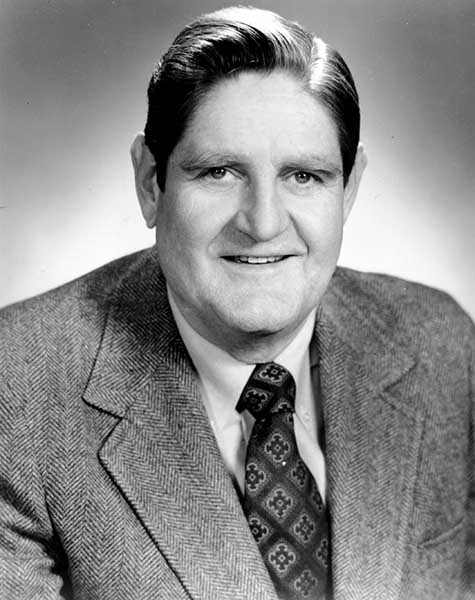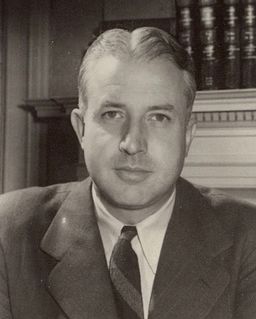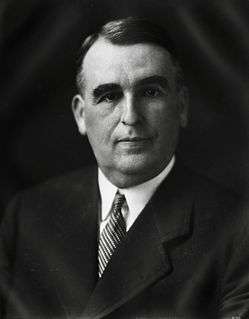George Duncan Hastie McMillan, Jr. is an American Democratic politician who served as the 23rd Lieutenant Governor of Alabama from 1979 to 1983. In 1989 he founded the City Stages music festival in downtown Birmingham, Alabama.

The 2010 congressional elections in Alabama were held on November 2, 2010, to determine will represent the state of Alabama in the United States House of Representatives. Alabama has seven seats in the House, apportioned according to the 2000 United States Census. Representatives are elected for two-year terms; those elected will serve in the 112th Congress from January 3, 2011 until January 3, 2013. The primary elections were held June 1, with the runoff on July 13.

The 1978 United States Senate election in Alabama was held on November 7, 1978. Incumbent Democratic Senator John Sparkman retired from the United States Senate and Chief Justice of the Alabama Supreme Court Howell Heflin was elected to succeed him.

The 1954 Alabama gubernatorial election took place on November 2, 1954, to elect the Governor of Alabama. Incumbent Democrat Gordon Persons was term-limited, and could not seek a second consecutive term.

The 1950 Alabama gubernatorial election took place on November 7, 1950, to elect the Governor of Alabama. Incumbent Democrat Jim Folsom was term-limited, and could not seek a second consecutive term.

The 1946 Alabama gubernatorial election took place on November 5, 1946, to elect the Governor of Alabama. Incumbent Democrat Chauncey Sparks was term-limited, and could not seek a second consecutive term.

The 1942 Alabama gubernatorial election took place on November 3, 1942, to elect the Governor of Alabama. Incumbent Democrat Frank M. Dixon was term limited, and could not seek a second consecutive term.

The 1938 Alabama gubernatorial election took place on November 8, 1938, to elect the Governor of Alabama. Democratic incumbent Bibb Graves was term-limited, and could not seek a second consecutive term.

The 1934 Alabama gubernatorial election took place on November 2, 1934, in order to elect the Governor of Alabama. Democratic incumbent Benjamin M. Miller was term-limited, and could not seek a second consecutive term.

The 1930 Alabama gubernatorial election took place on November 4, 1930, in order to elect the Governor of Alabama. Democratic incumbent Bibb Graves was term-limited, and could not seek a second consecutive term.

The 1926 Alabama gubernatorial election took place on November 2, 1926, in order to elect the Governor of Alabama. Democratic incumbent William W. Brandon was term-limited, and could not seek a second consecutive term.

The 1918 Alabama gubernatorial election took place on November 2, 1918, to elect the Governor of Alabama. Democratic incumbent Charles Henderson was term-limited, and could not seek a second consecutive term.

The 1914 Alabama gubernatorial election took place on November 3, 1914, in order to elect the Governor of Alabama. Democratic incumbent Emmet O'Neal was term-limited, and could not seek a second consecutive term.

The 1910 Alabama gubernatorial election took place on November 8, 1910, in order to elect the Governor of Alabama. Democratic incumbent B. B. Comer was term-limited, and could not seek a second consecutive term.

The 1906 Alabama gubernatorial election took place on November 6, 1906, in order to elect the Governor of Alabama. Democratic incumbent William D. Jelks was term-limited, and could not seek a second consecutive term.

The 1898 Alabama gubernatorial election took place on August 1, 1898, in order to elect the Governor of Alabama. Incumbent Democrat Joseph F. Johnston ran for a second term in office.

A general election was held in the U.S. state of Alabama on November 6, 2018. All Alabama executive officers were up for election along with all of Alabama's seven seats in the United States House of Representatives. Primary elections took place on June 5, 2018, for both major parties.

The 1959 Mississippi gubernatorial election took place on November 3, 1959, in order to elect the Governor of Mississippi. Incumbent Democrat James P. Coleman was term-limited, and could not run for reelection to a second term. As was common at the time, the Democratic candidate ran unopposed in the general election so therefore the Democratic primary was the real contest, and winning the primary was considered tantamount to election.

The 1931 Mississippi gubernatorial election took place on November 3, 1931, in order to elect the Governor of Mississippi. Incumbent Democrat Theodore G. Bilbo was term-limited, and could not run for reelection to a second term. As was common at the time, the Democratic candidate ran unopposed in the general election so therefore the Democratic primary was the real contest, and winning the primary was considered tantamount to election.

The 1927 Mississippi gubernatorial election took place on November 8, 1927, in order to elect the Governor of Mississippi. Incumbent Democrat Dennis Murphree, as he had not served a full term, was eligible for and ran for election. As was common at the time, the Democratic candidate ran unopposed in the general election so therefore the Democratic primary was the real contest, and winning the primary was considered tantamount to election.



















